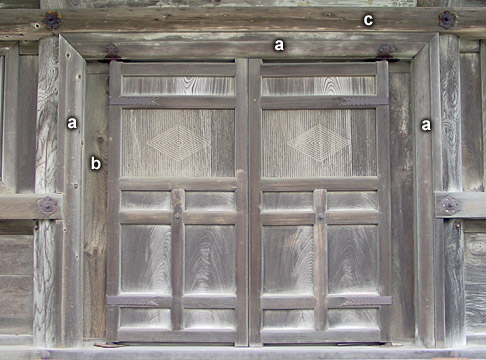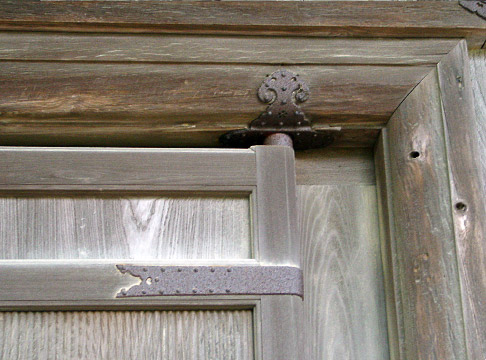Also hezuke or henzuke Σt. Thought to be a corruption of a term
used in Shousouin documents SHOUSOUIN SHIZAICHOU ³q@ΰ . The frame-like arrangement placed on each
side, or each side and across the top of, entrances to temple halls, pagodas,
shrines and aristocratic residences. The lintel at the top of the frame
is attached from beneath to a non-penetrating tie beam uchinori nageshi ΰ@· (see *uchinorizai ΰ@ή). The vertical framing parts are set on non-penetrating tie beams that
are less thick than the usual type *han-nageshi Ό·. The door jamb *houdate ϋ§, is attached to the heijiku, to which the door is then hung. Pivot
hinges *hassou kanagu ͺoΰο, may be used to attach the doors to the door jamb. The edges of the heijiku are usually chamfered. If square posts are chamfered at a
45Kangle, they are called *kirimen ΨΚ. Other moldings, called *karadomen ΛΚ, are cut with a rounded center. A *kichoumen { Κ is a type of chamfer that frames the paneled doors of the Chinese style
*sangarado VΛ.
The chamfer is cut at each corner to leave pointed spike-like protrusions.
|




